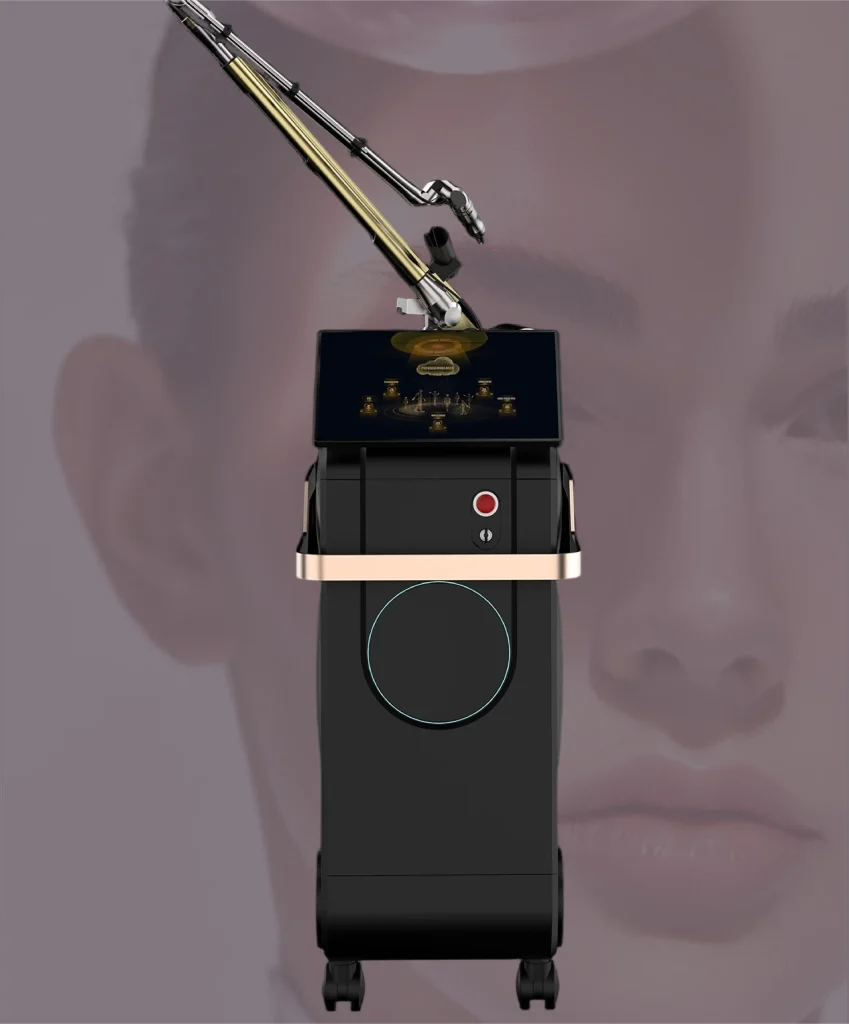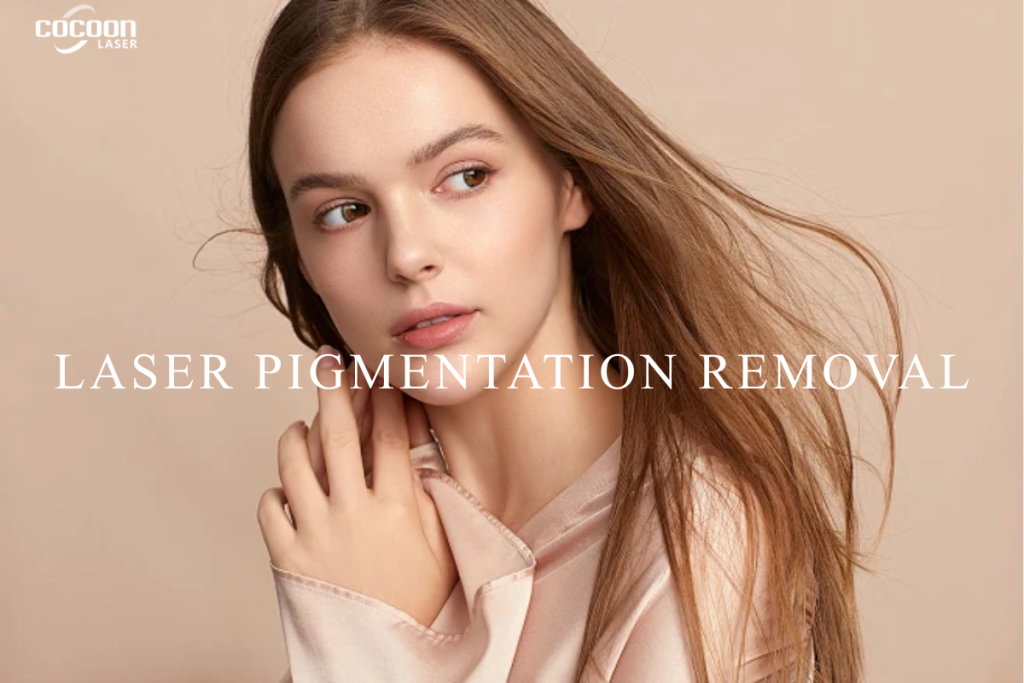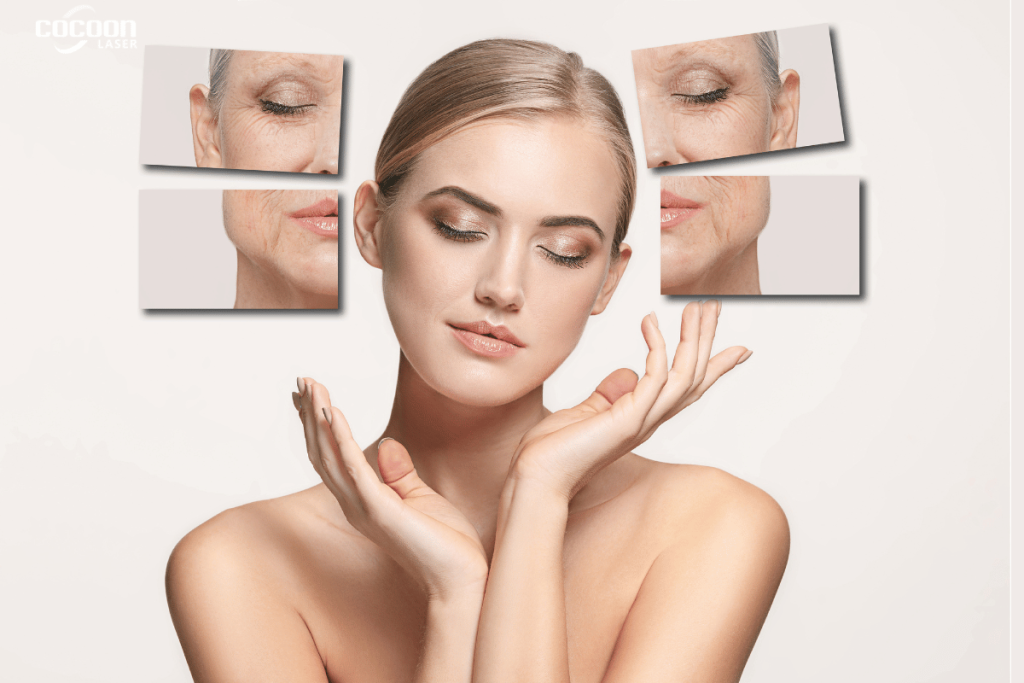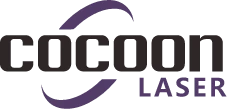Thulium Laser vs Picosecond Laser: Which Targets Pigment More Safely?
Why This Comparison Matters
As demand for Laser Pigmentation Removal grows, clinics are often choosing between two advanced platforms:
- Fractional thulium lasers (such as 1927 nm and 1550 nm)
- Picosecond lasers with multi-wavelength options
Both can improve sun damage, age spots and certain types of melasma, but they deliver energy to the skin in very different ways. That has direct implications for safety, downtime and suitability for different skin tones.
If you want a broader introduction to how pigment lasers work, you can first read the pillar article:
Laser Pigmentation Removal: How It Works and What Results to Expect.
This article goes a level deeper and asks a focused question:
When your goal is to clear pigment as safely as possible, how do thulium and picosecond lasers compare?

How Thulium Lasers Target Pigment
Wavelengths and mechanism
Modern thulium platforms commonly use 1927 nm and sometimes combine it with 1550 nm in a dual system. These are non-ablative fractional wavelengths: instead of removing the whole surface, they create microscopic treatment zones in the epidermis and upper dermis.
At 1927 nm, absorption is high in water, so the energy is concentrated very superficially. This makes the wavelength well suited to:
- Epidermal and superficial dermal pigmentation
- UV-induced dyschromia and photodamage
- Conditions like actinic keratoses and early photoaging

Because only a fraction of the skin is treated in each pass and islands of healthy skin remain, healing is usually faster than with fully ablative resurfacing.
Evidence for pigment indications and safety
Multiple clinical studies have evaluated 1927 nm fractional thulium lasers for melasma and photo-induced pigmentation. Retrospective series and prospective trials report:
- Significant improvement in melasma severity scores after a series of treatments
- Noticeable reduction in dyspigmentation and fine lines associated with photodamage
- Generally short-lived erythema and peeling as main side effects
A review of dual 1550/1927 nm systems (for example, Fraxel Dual–type devices) notes that these wavelengths can be effective across a wide range of phototypes when conservative protocols are used, though post-inflammatory hyperpigmentation (PIH) remains a recognised risk, especially with higher densities or in darker skin.
In other words:
- Strengths: controlled fractional injury, strong evidence in photoaging and selected melasma cases, well-studied downtime profile
- Main risks: temporary darkening or PIH, prolonged redness in a small minority of patients
Thulium in practice: Lav Dual 1927 nm + 1550 nm
A dual-wavelength platform such as Lav Dual 1927nm + 1550nm Thulium Laser is designed to use this science in a flexible way:
- 1927 nm for superficial pigment and tone irregularity
- 1550 nm for deeper collagen remodeling, scars and texture
- Fractional modes to customise energy, pulse width and pattern for either epidermal or deeper dermal targets
- Sliding and non-invasive modes to spread energy more gently over larger areas, helping manage downtime and safety for full-face treatments
For clinics, this makes thulium lasers particularly attractive when pigment is diffuse and mixed with photoaging—for example, a patient with mottled sun damage, enlarged pores and early wrinkles.

How Picosecond Lasers Target Pigment
Ultra-short pulses and photoacoustic action
Picosecond devices deliver energy in pulses measured in trillionths of a second. The very short pulse duration produces a strong photoacoustic effect: pigment particles are fractured mechanically rather than relying primarily on heat.
Key consequences for safety and results:
- Less thermal diffusion to surrounding tissue
- Smaller pigment fragments that the body can clear more efficiently
- Potentially lower PIH risk and shorter downtime compared with older nanosecond Q-switched lasers, particularly when treating darker skin conservatively
Fractional tips for picosecond platforms create microscopic intradermal cavities—laser-induced optical breakdown (LIOB)—which stimulate collagen without removing the epidermis, combining pigment clearance with overall skin rejuvenation.
Clinical data on pigment and safety
Published studies on various picosecond systems report:
- Effective clearance of benign pigmented lesions and tattoos, with high patient satisfaction and rapid recovery
- Improvement in melasma and PIH in Asian populations, sometimes with fewer adverse events compared to traditional devices when protocols are gentle and combined with topical care
As with all pigment lasers, over-treating or ignoring sun protection can still provoke PIH. A 2024 review of PIH emphasises that laser and light devices can both improve and worsen pigmentation depending on how they are used, underlining the need for careful parameter selection and aftercare.
Picosecond in practice: Ultra PicoMax
Ultra PicoMax is an example of a multi-wavelength picosecond platform built around this approach:
- Five wavelengths (532/585/650/755/1064 nm) to cover epidermal spots, deeper dermal pigment and multicolour tattoos
- 350 ps pulse width for genuine picosecond delivery
- Modes like Picosecond, PTP and Multi-Pulse tailored to melasma, stubborn pigment and mixed lesions
- A Honeycomb fractional handpiece that induces LIOB in the dermis, targeting texture and pores while leaving most of the epidermis intact
- Indications and FAQs that highlight suitability for skin types I–VI with minimal downtime when parameters are chosen appropriately
For clinics focusing on Laser Pigmentation Removal, this translates into the ability to treat localised lesions, complex dermal pigment and tattoos with the same platform while also offering rejuvenation.
Safety Comparison: Thulium vs Picosecond for Pigment
Instead of asking “Which laser is absolutely safer?”, it is more realistic to ask:
In which situations does each technology offer a safety advantage for pigment-focused treatments?
1. Type and depth of pigmentation
| Scenario | Thulium (1927/1550) | Picosecond |
|---|---|---|
| Diffuse sun damage, mottled photoaging | Excellent choice – fractional coverage can resurface large areas and even out tone while improving texture. | Useful, but often paired with spot-focused treatments rather than full-face resurfacing. |
| Epidermal spots (lentigines, freckles) | Effective, especially in fair to medium skin; usually 1–3 sessions. | Very strong option – high selectivity for melanin, quick clearance, short downtime. |
| Mixed melasma with photoaging | Evidence supports cautious thulium protocols, often in combination with topical agents and strict UV control. | Growing data for melasma control with conservative settings; good when dermal pigment and recurrent PIH are concerns. |
| Dermal or tattoo pigment | Not ideal as a primary tool; better for surface changes. | Preferred – deeper-penetrating wavelengths (755, 1064 nm) and strong photoacoustic action. |
2. Skin tone and PIH risk
- Fair to medium skin (Fitzpatrick I–III)
- Both platforms can be used relatively aggressively if there is good sun protection and no history of abnormal scarring or PIH.
- Fractional thulium is particularly attractive when the goal is overall resurfacing plus pigment.
- Darker skin (Fitzpatrick IV–VI)
- Literature on melasma and PIH repeatedly warns that any strong laser can trigger rebound pigmentation in these patients.
- Picosecond systems, especially with fractional tips and longer wavelengths (755/1064 nm), are often favoured because of lower thermal diffusion, provided that fluences and densities are conservative.
- Thulium lasers can still be used, but parameters must be gentle and spaced treatments are recommended; some studies show good outcomes in Asian skin when protocols are cautious.
3. Downtime and patient expectations
- Thulium fractional resurfacing
- Typically involves a few days of erythema and bronzing, followed by flaking as superficial pigment sheds.
- Good for patients who accept visible downtime in exchange for broader improvements in texture and fine lines.
- Picosecond laser sessions
- Often cause only transient redness and mild swelling, resolving in hours to a couple of days, especially with fractional settings.
- Attractive for busy patients who prefer “lunchtime procedures” with minimal disruption.
Bottom line:
- For broad, photoaged pigment with textural damage, a fractional thulium platform like Lav Dual can be a very safe and efficient option when protocols respect skin type.
- For discrete spots, dermal pigment, tattoos or higher-risk skin tones, a multi-wavelength picosecond system like Ultra PicoMax often offers a safety edge thanks to its photoacoustic mechanism and flexible wavelengths.
Combining Thulium and Picosecond for a Safer Pigmentation Portfolio
In real-world clinics, the question is rarely “thulium or picosecond forever?”. Many physicians combine technologies:
- Using thulium 1927/1550 for global resurfacing and tone
- Adding fractional picosecond passes to refine dermal pigment and texture with minimal extra downtime
This layered approach can:
- Spread energy across different depths and chromophores
- Reduce the need for overly aggressive single-modality treatments
- Allow protocols to be customised tightly around each patient’s pigmentation pattern and PIH risk
With Lav Dual providing controlled fractional resurfacing and Ultra PicoMax covering pigment, tattoos and rejuvenation, a clinic can design step-wise Laser Pigmentation Removal plans rather than relying on one device for every indication.
Safety Checklist for Clinics Offering Laser Pigmentation Removal
Whichever platform you choose, long-term trust is built on consistent, safe outcomes. Key points that dermatology literature and professional guidelines repeatedly emphasise include:
- Careful diagnosis – distinguish epidermal vs dermal pigment, melasma vs PIH vs lentigines.
- Match wavelength and pulse regime to the target – for example, thulium for superficial mottling, picosecond for deeper pigment and tattoos.
- Respect skin type – start conservatively, especially in Fitzpatrick IV–VI.
- Explain realistic expectations – pigment may darken before it flakes or fades; melasma is chronic and prone to relapse.
- Insist on strict sun protection – daily broad-spectrum sunscreen, hats and behavioural changes.
- Combine with topical care – brightening agents and barrier support help stabilise results and reduce relapse.
- Document and refine protocols – use before-and-after photography and adjust parameters based on observed healing in your own patient population.
Final Thoughts
There is no single “safest” pigment laser in isolation. Safety comes from matching the right technology to the right indication and skin type, and from respecting the biology of melanin and inflammation.
- Thulium fractional lasers are powerful tools for superficial pigment plus overall resurfacing, especially in patients who can tolerate a few days of downtime.
- Picosecond lasers excel when you need highly selective pigment targeting, minimal thermal spread and versatility across different lesions and skin tones.
For clinics and distributors building a comprehensive Laser Pigmentation Removal program, pairing a dual-wavelength thulium system like Lav Dual 1927nm + 1550nm with a multi-wavelength picosecond platform such as Ultra PicoMax offers a flexible, evidence-aligned way to serve a wide range of pigment concerns—while keeping safety at the centre of every protocol.
If you want to obtain more information, please follow our official website and Facebook.










